
Sun news July 3, 2024: Flare activity on the rise
Today’s top story: We’ve seen an increase in flaring over the past day, with sun activity at moderate levels. This comes after a several-day-lull in activity, even after May and June just set the records for sunspot number and activity levels for the current solar cycle. This reminds us that the apparent state of the sun can change quickly and unexpectedly, especially during Solar Maximum. Will activity continue to increase, or will the sun calm down again? Stay tuned!
Last 24 hours: Between 11 UTC yesterday and 11 UTC today the sun produced a total of 19 flares. An isolated M flare kept sun activity at moderate. The remaining flares were Cs. A beautiful prominence eruption occurred off the northwestern limb (edge) just after 20 UTC on July 2. The largest flare was an M1.5 from AR3730 at 7:29 UTC on July 2. This caused an R1 (minor) radio blackout over western Asia. The lead flare producer of the past day was AR3729, which produced ten C flares. This region showed additional growth, increasing its magnetic complexity to a beta-gamma-delta magnetic complexity configuration. The more complex the magnetic configuration, the greater the potential for flares. The remaining regions remain simple, with either alpha or beta configurations. The sun has 11 numbered active regions on its Earth-facing side.
Next 24 hours: The chance for C flares is 99%. The chance for M flares is 35%. The chance for X flares is 5%.
Next expected CME: No coronal mass ejections (CMEs) were observed in the available coronagraph imagery.
Current geomagnetic activity: Earth’s magnetic field is quiet at the time of this writing (11 UTC on July 3). The geomagnetic field is expected to reach unsettled-to-active levels on July 3-4 with isolated G1 (minor) geomagnetic storm periods likely today due to the anticipated arrival of multiple CMEs that departed the sun between June 26-29. Quiet-to-unsettled levels are expected to return on July 5.
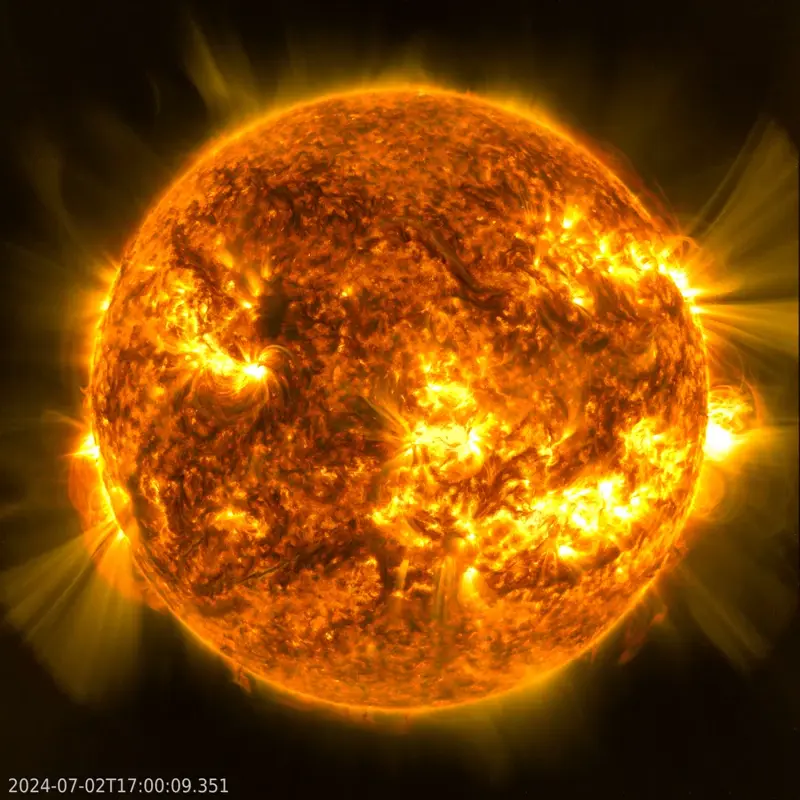
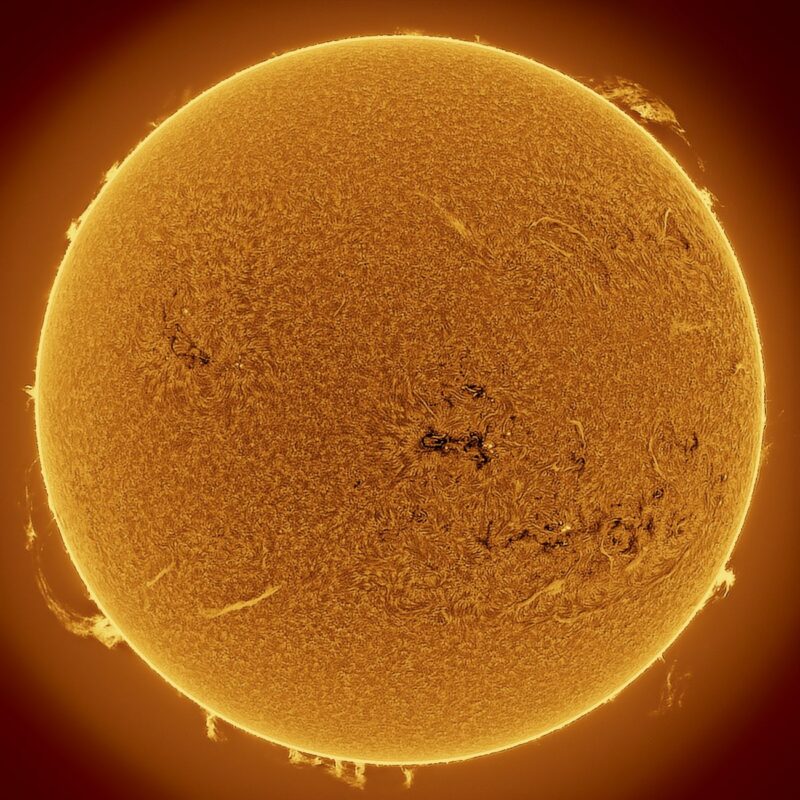
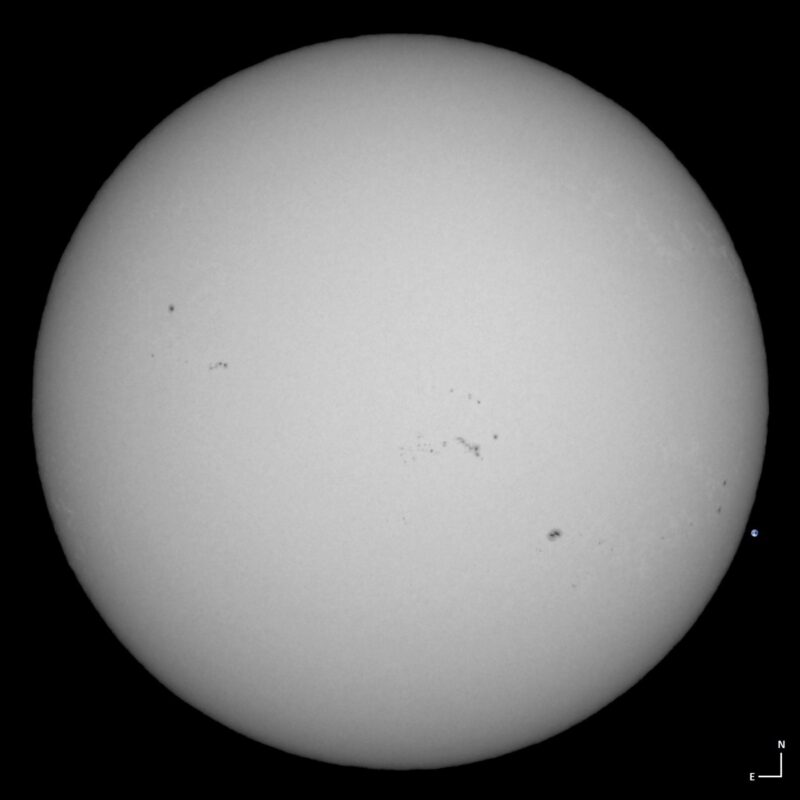
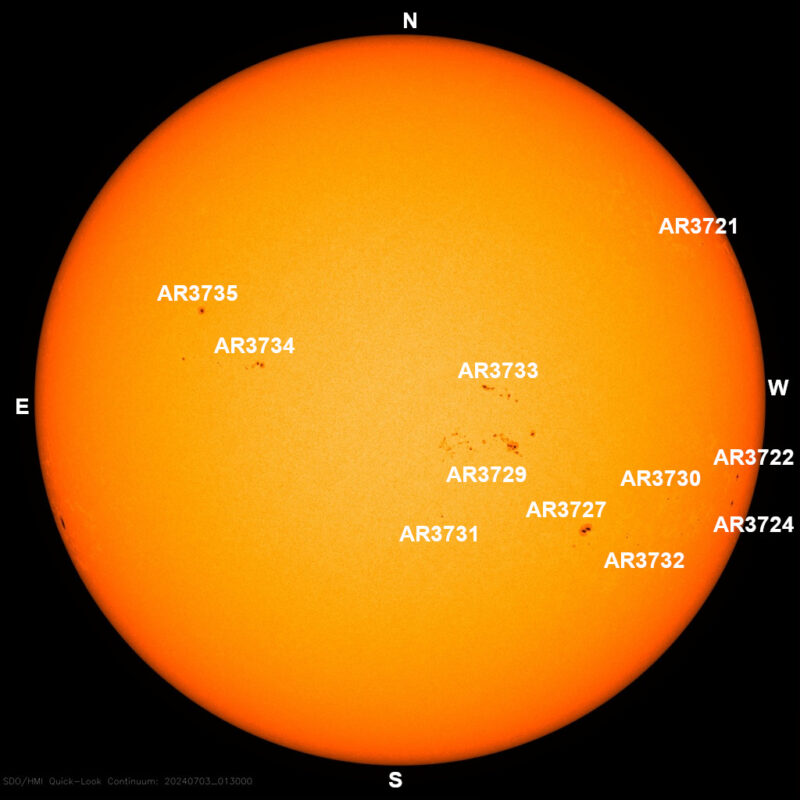
Sun news July 2, 2024: Is Solar Cycle 25 peaking?
It’s now official that June’s sunspot number reached 164, which places last month in 2nd place for the largest number of sunspots for Solar Cycle 25, slightly behind May 2024, with 172 sunspots. The current solar cycle has surpassed all expectations of its size and activity level. We have seen multiple historic geomagnetic storms and intense solar activity over the past several months. Have we seen the peak of the cycle? We still need to wait a few months to make a final determination, but we might be seeing the peak (surely, a peak). Often, solar cycles have two peaks, one for each hemisphere on the sun. It is possible the sun’s northern hemisphere has already peaked in sunspot number. It’s also possible there will be higher future months. We will have to wait and see, so stay tuned!
Last 24 hours: Between 11 UTC yesterday to 11 UTC today the sun produced a total of 18 flares. An isolated M flare brought sun activity to moderate. The remaining 17 flares were C class. The largest flare was an M2.1 flare from AR3730 at 11:02 UTC on June 30. This caused an R1 (minor) radio blackout over Libya. The lead flare producer of the past day was AR3729; it blasted out seven C flares. Also, an as-yet-unnumbered newcomer in the southeast produced six flares. Region AR3739 showed slight growth, increasing its magnetic complexity to a beta-gamma magnetic complexity configuration. The more complex the magnetic configuration, the great the potential for flares. The remaining regions remain simple with either alpha or beta configurations. The sun has 11 numbered active regions on its Earth-facing side this morning.
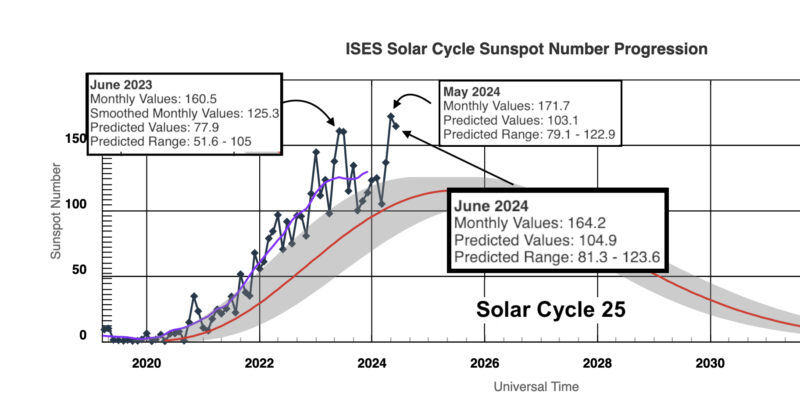
Sun news July 1, 2024: A calm sun day during solar max
Sun activity was low over the past 24 hours. But we’re at or near solar maximum, the peak of the sun’s 11-year cycle! It just goes to show that even an active sun can have periods of calm. These periods can last days or even weeks. On average, as we are closer to solar maximum, the calm periods are shorter. Check out the video above. It shows images of the sun during solar minimum and solar maximum side-by-side. The video shows the sun during a low point of the cycle, June 2019, and June 2024; you’ll quickly see the difference. Looking at the photosphere, the difference between sunspots is very apparent. The difference is also very clear looking at the sun’s upper layers, its chromosphere and corona. The quiet sun during June 2019 is very uniform and simple, in contrast to the active sun of June 2024. We can also see large coronal holes near the poles (polar coronal holes) during quiet times that are not on an active sun. Meanwhile, we see large, complex, and even chaotic loop structures all over the active sun. The current period of calm over the past 24-48 hours – with no M or larger flares or coronal mass ejections (CMEs) – will be over very soon. Stay tuned! NOTE: As we were about to publish today’s updated sun news post, the sun produced two M flares starting just after 11 UTC July 1. The calm is already over.
Last 24 hours: Our observing period is 11 UTC yesterday to 11 UTC today. And during that period, sun activity remained low. This was the case at Earth as well; we had quiet geomagnetic activity. The sun produced 11 C flares during our observation period. The largest event of the past day was a C2.8 flare from AR3727 at 20:56 UTC on June 30. The sun has 15 numbered active regions on its Earth-facing side. All regions have simple magnetic complexity configurations of either alpha or beta.
??Sun news July 1, 2024: A calm sun, during solar max
??It’s a calm Monday on the sun. So how can we tell on a day like today that the sun is still active? Even the active sun (near or during solar maximum) can have periods of calm
MORE at EarthSky: https://t.co/xD29wLfm4e pic.twitter.com/tBM1g3uxfl
— Dr. C. Alex Young (@TheSunToday) July 1, 2024
Sun news June 30, 2024: Parker Solar Probe nearly touches sun today
Today, NASA’s Parker Solar Probe enters its 2nd-to-last perihelion (closest approach to sun). It’ll sweep within 5.3 million miles of the sun this time, bringing it ever-closer to its final historic closest approach of less than 4 million miles from the sun, due in December 2024. At that final perihelion, NASA has said, Parker Solar Probe will “touch” the sun. Perihelion is the point of closest approach when orbiting the sun. Parker has made incremental steps during its mission to get closer and closer during its perihelion. It has 26 planned perihelions. After each Venus flyby, the spacecraft makes it slightly closer in its orbit of the sun. Subsequent perihelions are at the same distance until the next Venus flyby brings the craft closer. Parker has made six Venus flybys. Its June 30 and September 30 perihelions mark the last orbits around the sun before it makes its seventh and final Venus flyby on November 6, 2024. Then, on December 24, 2024, the Parker Solar Probe reaches its closest perihelion, when it will be around 3.9 million miles (6.28 million km) from the sun’s surface (the photosphere), traveling at nearly 500,000 mph (800,000 kph). The spacecraft has long since surpassed the records for closest approach to the sun and fastest human-made object. This record will probably stand firm for years – maybe decades – or even longer. The mission was first dreamed up in 1958, when Eugene Parker predicted the existence of the solar wind. It was not until August 2018, 60 years later, that this dream could finally be achieved. This mission’s ultimate goal post is another six months away, but over the past six years the mission’s data has fundamentally changed our understanding of the sun, its interaction with the solar system, space weather, and other stars in the universe. There is much data to still explore but many fundamental discoveries have already been made. Here are just a few:
- Solar wind origins: One of the most fundamental science goals is understanding the solar wind. So of the puzzles answered or created these can be listed out in more detail.
- Coronal heating: Data supporting the theory that magnetic waves and small-scale magnetic reconnection events significantly contribute to the corona’s high temperatures.
- Temperature profiles: Temperature measurements of different solar wind components improve our understanding of heating mechanisms.
- Solar wind speed variations: Observations show that the solar wind’s speed increases dramatically closer to the sun.
- Solar wind composition: The solar wind’s elemental and isotopic composition reveals new information about the sun’s outer layers.
- Shock waves in solar wind: Shock waves within the solar wind provide insights into their formation and impact on space weather.
- Plasma wave observations: Various plasma waves in the solar wind have been identified, helping to explain energy transfer processes.
- Magnetic switchbacks: Unraveling the origins of mysterious zigzagging magnetic structures in the solar wind.
- Dust-free zone: Finding a potential dust-free zone around the sun, where intense radiation vaporizes dust particles.
- Particle acceleration: Insights into how solar energetic particles are accelerated and transported.
- Alfvén critical surface: Direct measurements of the boundary where the solar wind transitions from magnetic to plasma dynamics by crossing the Alfvén critical surface. This is the transition between the sun and interplanetary space where Parker “touched the sun.”
- Coronal mass ejections (CMEs): Data on the properties and propagation of CMEs help improve space weather forecasting.
- Solar magnetic field structure: Mapping of the sun’s magnetic field structure provides unprecedented insights into its complex magnetic environment.
- Solar corona dynamics: Provide observations of dynamic phenomena in the solar corona, including magnetic reconnection events and wave-particle interactions.
- Magnetic fields and solar activity: Detailed observations of magnetic field lines and their interactions contribute to our understanding of solar flares and coronal mass ejections and space weather.
- Venus’ atmosphere and surface: The first ever visible light images of Venus’ surface made through the atmosphere along with new radio observations of the planet.
Last 24 hours: Sun activity remained at low levels over the past 24 hours. The sun produced nine C flares during our observation period (between 11 UTC yesterday and 11 UTC today). The largest event was a C5.9 flare from AR3734 at 15:32 UTC on June 29. Three new regions were numbered: AR3733, AR3734, and AR3735. The sun has 15 numbered active regions on its Earth-facing side. All regions have simple magnetic complexity configurations of either alpha or beta. A filament erupted from the southwest on June 29 at 16:00 UTC. It produced a coronal mass ejection (CME) toward the SW and is expected to glance Earth on July 3.
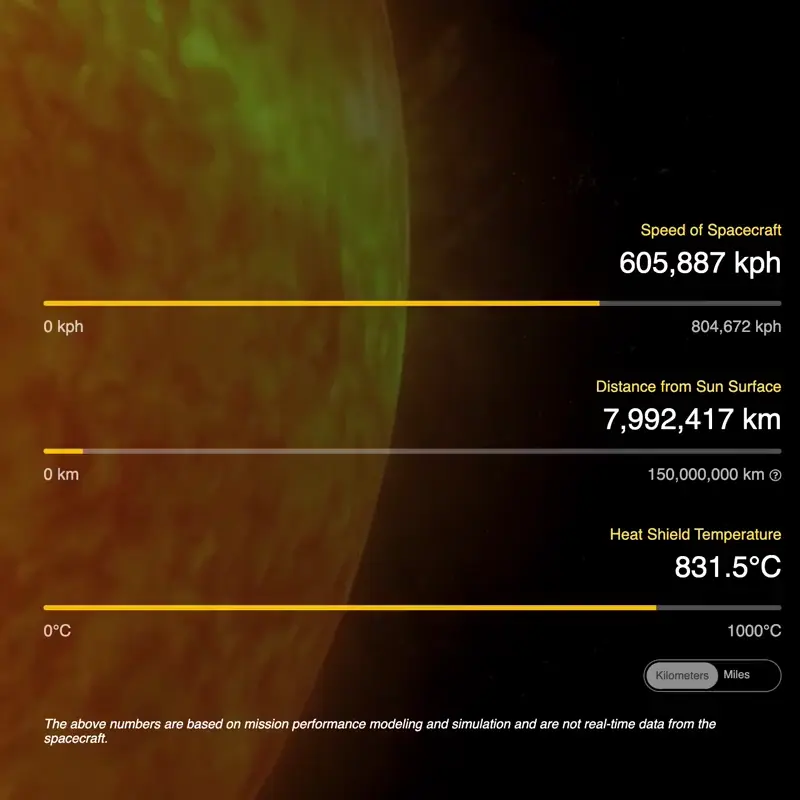
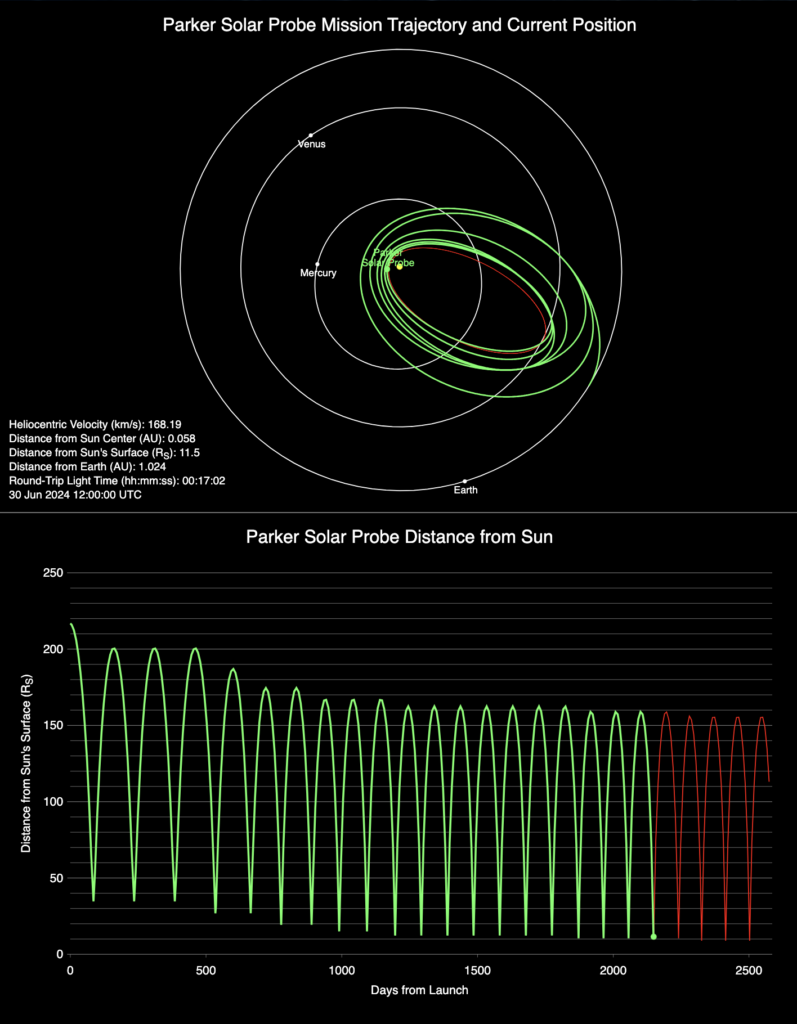
Sun news June 29, 2024: Unexpected severe storm brings aurora
The coronal mass ejection (CME) that the sun hurled into space on June 25 surprised us with an earlier arrival than anticipated. Earth’s magnetic field reached a G4 (severe) geomagnetic storm level yesterday. The original forecast was for a G1 (minor) geomagnetic storm late yesterday, but shortly after 11 UTC on June 28 (just after this post), the geomagnetic level reached a G1 level before climbing to G4. We hit the G4 threshold at 14:15 UTC yesterday, which lasted for a three-hour period. It then dropped to a G1 level for the next six hours. The surprise severe geomagnetic storm hit during daylight hours in Europe, the U.S. and Canada, but auroral displays were surely possible in the Southern Hemisphere. Did you see the auroras and take photos? Share them with us here.
Last 24 hours: Sun activity stayed at low levels over the past 24 hours. The sun produced fewer flares and only C flares during our observation period (between 11 UTC yesterday and 11 UTC today). The sun produced three flares. The largest was a C3.2 flare – by an as-yet-unnumbered active region – at 14:40 UTC on June 28. Active region AR3723 split into two different active regions due to its extended magnetic structure. The newly separated region is now labeled AR3730. With this separation, we are seeing the end of that large, now-historic active region producer of the largest X8.8 flare of Solar Cycle 25. After following the sun for weeks, we believe AR3723 is the present incarnation of the former AR3664. The sun has 12 numbered active regions on its Earth-facing side. There are three newcomers on the solar disk today: AR3730, AR3731 and AR3732. All the sunspot regions have simple alpha or beta magnetic configurations. Most solar activity continues around the solar limb (edge) in the form of prominences.
Last night, the northern lights lit up the sky over Chantry Island while casting vibrant reflections onto Lake Huron from sunset to sunrise in Southampton, Ontario, Canada. #northernlights #onwx #auroraborealis pic.twitter.com/3yhpb1mbfH
— Scott Rock (@scottrockphoto) June 28, 2024
Aurora, lightning, Milky Way, and a giant meteor. This is not a composite or AI. This was real life in South Dakota last night! #SDwx pic.twitter.com/SL18et62nw
— Aaron Rigsby (@AaronRigsbyOSC) June 28, 2024
I did position to film sprites from western South Dakota as an MCS moved east near sunset yesterday. I did NOT expect to have #aurora show up in the background. A huge bucket list item for me. This sprite even had a green ghost. @PaulMSmithphoto @xWxClub @StormHour pic.twitter.com/Hmuwjxyx4D
— Tom A. Warner (@ztresearch) June 28, 2024
Sun news June 28, 2024: Auroras possible tonight
Aurora watchers, get ready! Auroral displays are possible tonight with the arrival and glancing blow of a huge blob of plasma and magnetic fields — a coronal mass ejection or CME — that left the sun on June 24. At the time of this writing, Earth’s geomagnetic field is active. A G1 (minor) geomagnetic storm is anticipated later today. That could mean auroral displays for those in far northern latitudes. Good luck, aurora-chasers! Get those cameras out, and be sure to send us your beautiful photos.
Last 24 hours: Sun activity remains low with only C flares produced over the past day. Solar flare production during our observation period (between 11 UTC yesterday and 11 UTC today) consisted of 13 C flares. The largest event was a C6.6 flare at 23:47 UTC on June 27 from sunspot region AR3730. AR3730 is a newly labeled region that came after AR3723 became extended and was split in two. AR3723 remains lead flare producer with four C flares. The sun has nine numbered active regions on its Earth-faced side. All the sunspot regions have simple alpha or beta magnetic configurations. Most sun activity remains around the solar limb (edge) in the form of prominences.
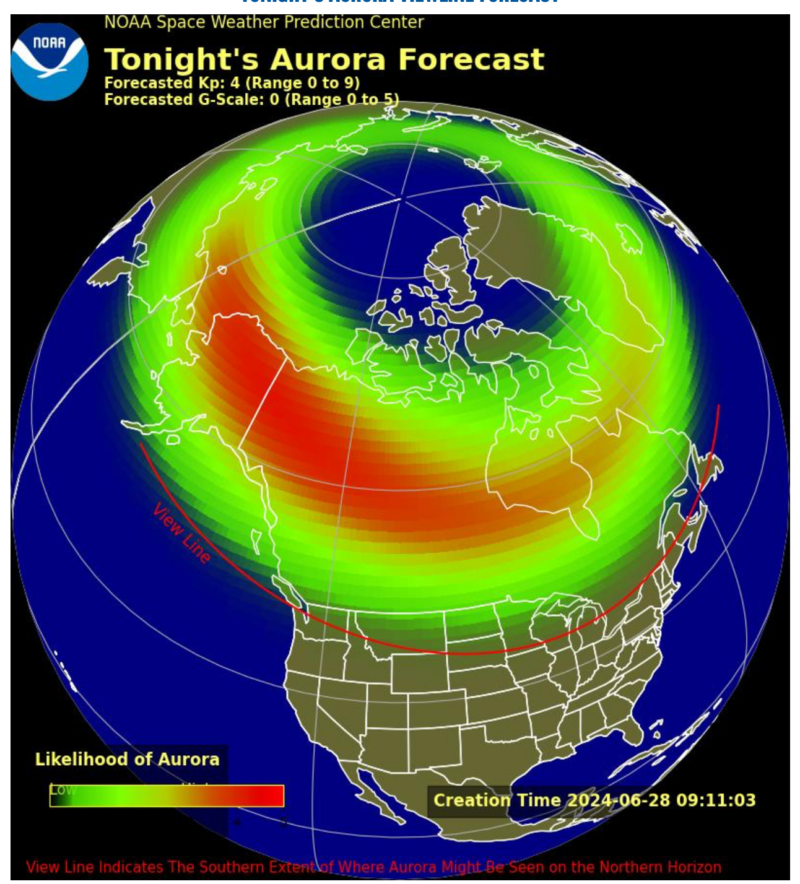
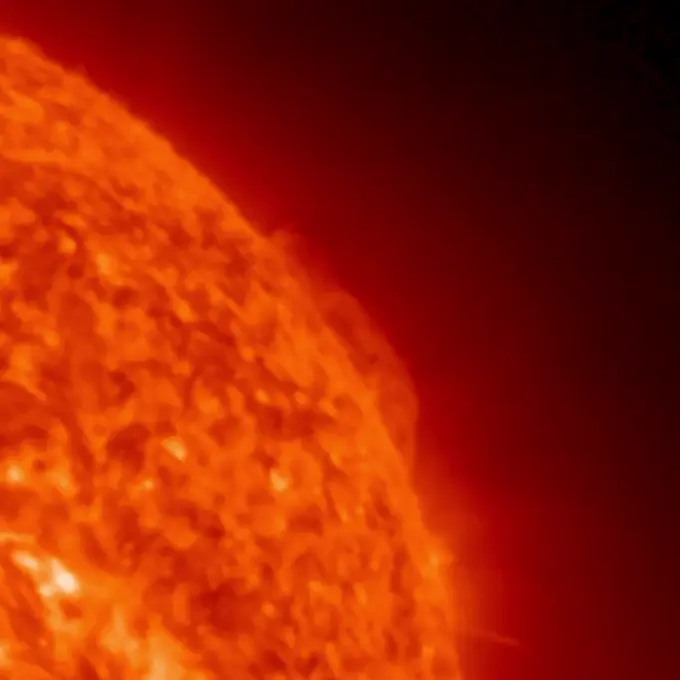
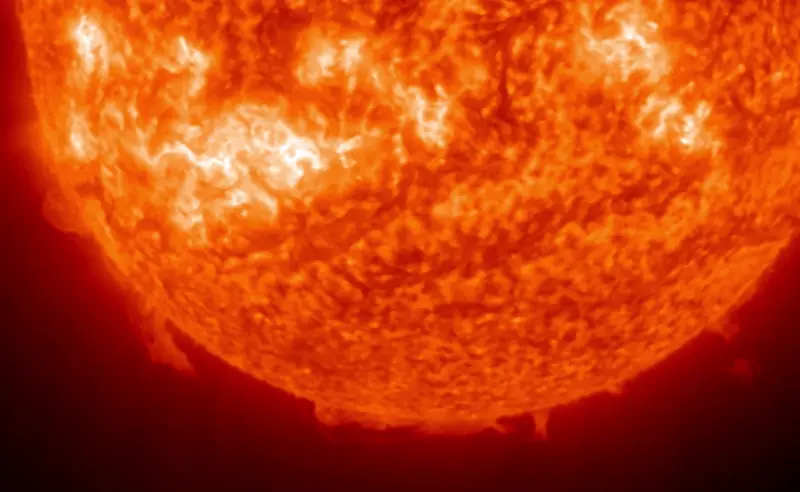
Sun News June 27, 2024: Sun-stuff incoming, auroras on the way?
A huge blob of plasma and magnetic fields – a coronal mass ejection, or CME – is currently on its way to Earth. It was hurled by the sun on June 24, and its anticipated glancing blow in the next 24 hours could trigger a G1 (minor) geomagnetic storm tomorrow. That could mean auroral displays for those in far northern latitudes. Good luck, aurora-chasers!
Last 24 hours: Solar activity has dropped to low after only C flares were fired over the past day. The sun produced 13 C flares between 11 UTC yesterday and 11 UTC today. The largest event was a C6.3 flare at 15:30 UTC on June 26 from sunspot region AR3728 in the southeast. The lead flare producer of the period was AR3723, which produced four C flares. Most activity was around the sun’s limb (edge), where we saw many jets and prominences. AR3713 kept its high-potential beta-gamma-delta magnetic complexity. The rest of the nine labeled sunspots on the solar disk are showing simple alpha or beta configurations. There’s a newcomer region on the Earth-facing side of the sun labeled AR3729.
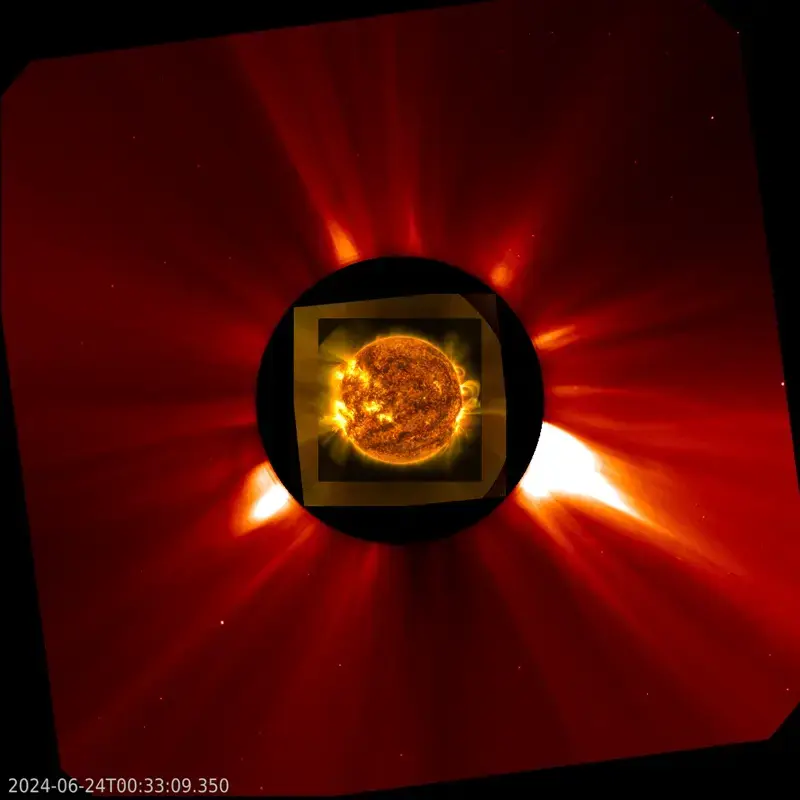
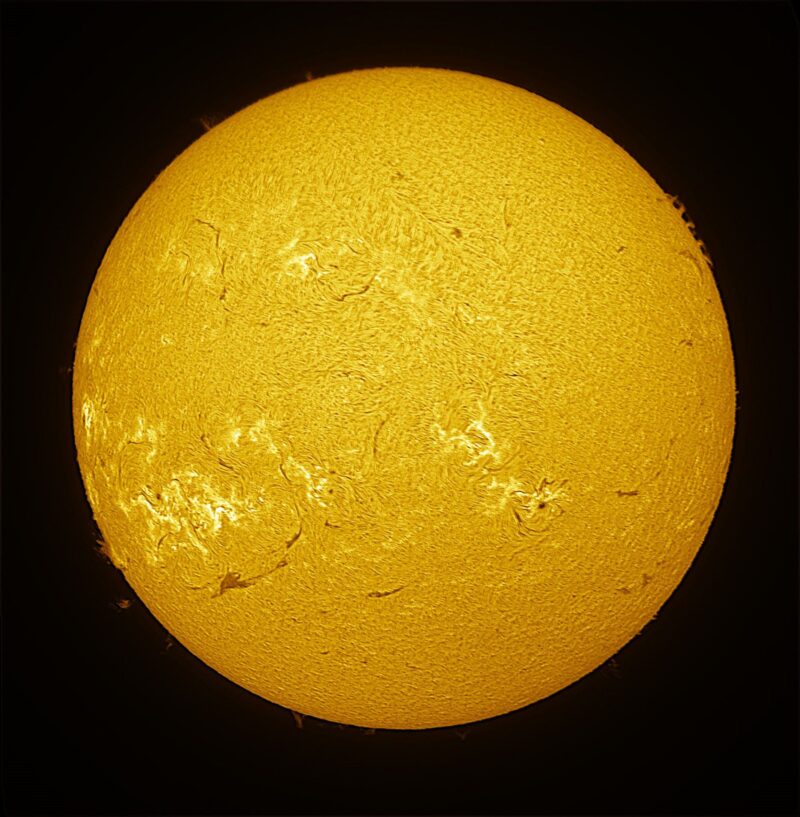
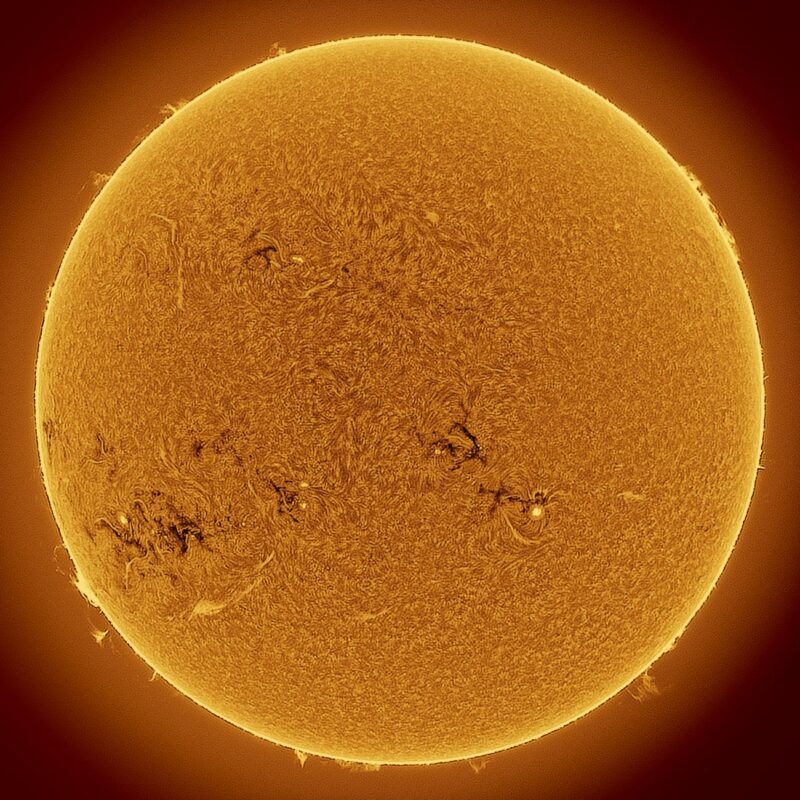
Sun News June 26, 2024: GOES-U goes up!
Following some nail-biting over the weather, GOES-U, the 4th and final member of NOAA’s GOES-R series of Earth- and spaceweather-observing craft, lifted off successfully yesterday from NASA’s Kennedy Space Center (KSC) in Florida. A SpaceX Falcon Heavy rocket boosted the satellite to a geosynchronous transfer orbit. That Falcon Heavy consisted of three modified, strapped-together first stages, by the way, with a second stage and the payload, sitting atop a central booster. About eight minutes after liftoff, the two side boosters returned to Cape Canaveral Space Force Station, next door to KSC, touching down almost side by side. Mind-blowing sight! See it in the Instagram post above from Greg Diesel-Walck and Chrissy Walck of the EarthSky community! The Geostationary Operational Environmental Satellites-U (GOES-U) is special in a couple of ways. It is the last of the GOES-R line. That will be replaced by the GOES extended line. The satellite is designed to provide critical data on earthly weather and climate – plus solar data – to meteorologists and other parties. Near-Earth spaceweather will be monitored. NOAA GOES provides an outstanding service in spaceweather and so much more. See our interview with NOAA spaceweather forecaster Shawn Dahl on NOAA’s warning system for solar flares with respect to earthly power grids, satellites and aviation. Congrats to NOAA on the launch, and, to everyone else, stay tuned!
Last 24 hours: An isolated M flare kept solar activity at moderate levels. The blast was a faint M1.0 by newcomer active region AR3727 in the southeast. It occurred at 12:45 UTC on June 25. Shortly after the flare, an R1 (minor) radio blackout affected an area over Morocco. Sun activity during our observation period (11 UTC yesterday to 11 UTC today) has been mostly faint C flares. The sun produced a total of 20 flares; 19 Cs plus the abovementioned M flare. Activity was seen mostly around the sun’s periphery, with many jets and long-lasting prominences. Only active region AR3713 has an interesting magnetic configuration, a beta-gamma-delta complexity. The rest of the labeled sunspots on the solar disk show alphas or betas (the more complex the magnetic configuration, the greater the chance for flares). The sun now has eight active regions on its Earth-facing side. There are two newcomers on the Earth-facing side of our sun, now numbered AR3727 and AR3728. Newcomer AR3727 is the lead flare producer of the period, it blasted out seven flares, the only M flare of the day plus another six Cs.
Sun news for June 25, 2024: Filaments erupting across sun’s face today
We often focus on flares when talking about sun activity. They’re flashy, no doubt. But today filaments are erupting across the sun’s visible face. These are great ropes of solar material and magnetic fields arcing up from the visible surface of the sun. We see them in a range of sizes today. Some of the largest filaments extend across the entire solar disk, meaning they are more than half a million miles (800,000 km) long! A huge filament in the sun’s southeastern quadrant unraveled from the sun, releasing billions of tons of stuff into space at millions of miles an hour. Another erupted off the western limb from farther around the limb (edge). Like flares, filaments can produce a strong magnetic impact at Earth. Some of the most impactful events are actually a combination of a flare and an erupting filament. The sun is amazing and exciting to watch. Stay tuned.
Last 24 hours: After yesterday’s almost-X flare (a flashy introduction to returning sunspot region AR3723), sun activity has calmed to moderate levels. AR3723 is probably the historic region that we’ve seen go twice across the sun’s visible face already, albeit with different labels (AR3697 and AR3664). In one of those former incarnations, it produced the biggest X flare of Solar Cycle 25 so far. Will this region continue to produce historic activity? We don’t know, but the region is worth watching. Meanwhile, we had M flares during the past day (11 UTC yesterday to 11 UTC today), so that sun activity has dropped from yesterday’s high to moderate today. There were 11 flares in the past day, three Ms plus eight C flares. The largest was an M1.5 flare from active region AR3713 at 11:48 UTC on June 5. Shortly after the flare, an R1 (minor) radio blackout affected an area over Algeria. The breakdown of the M flares is:
– M1.1 flare by AR3720 at 11:13 UTC on June 24. R1 (minor) radio blackout over Algeria.
– M1.5 flare by AR3713 at 11:48 UTC on June 24. R1 (minor) radio blackout over Algeria.
– M1.1 flare by AR3713 at 19:10 UTC on June 24. R1 (minor) radio blackout over the Bahamas.
Departing active region AR3713 has a beta-gamma magnetic configuration, as does sunspot region AR3720. After its flashy entrance, yesterday’s producer of an almost X flare, active region AR3723, is showing a beta-gamma-delta complexity. This is a good indication that it has the potential for more interesting activity. The sun has seven active regions on its Earth-facing side today.
View this post on Instagram
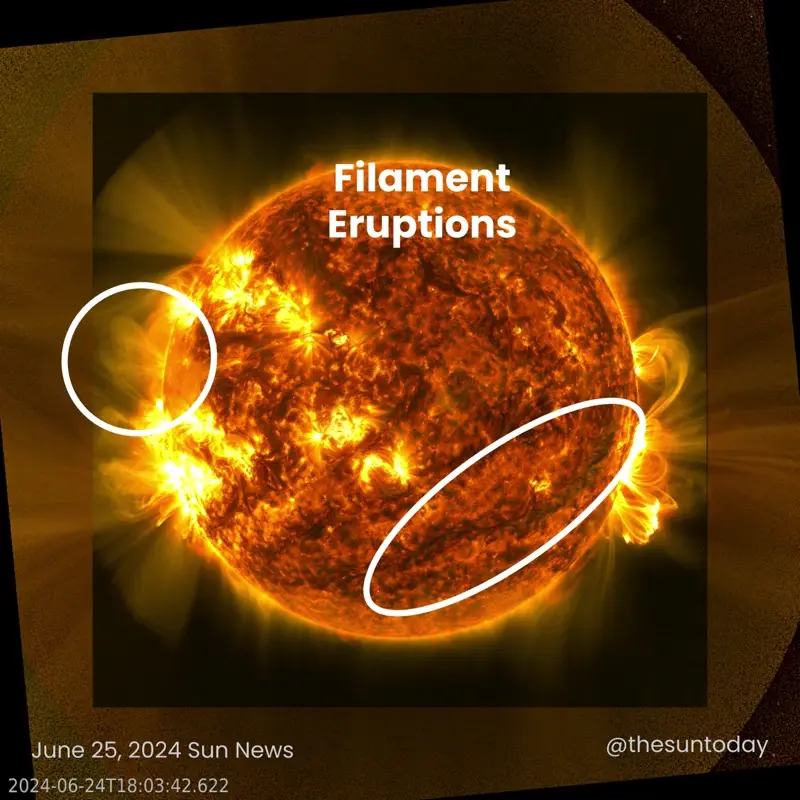
Sun news for June 24, 2024: Super sunspot returns with almost-X flare
The super-sunspot region is back! This will be its third trip across the sun’s visible face. This is the same region that produced the largest X flare of Solar Cycle 25 so far. And this region was one of the major drivers of the great solar superstorm of May 2024. It’s now labeled AR3723, formerly AR3697, formerly AR3664. Over the past day, sun activity reached high levels thanks to a near-X flare (an M9.3) from this returning region, plus three more M flares. The region has not come fully into view, but from an initial look, it does not appear to be as large this third time around. But it’s still carrying a magnetic punch! And that means a potential for more flaring. The other three M flares came from departing region AR3712, which has been one of the major flare producers over the past two weeks. The first two M flares were isolated and the last two were associated with a larger eruption from AR3712. The eruption was largely west-directed. Now we wait to see what AR3723 has in store. Stay tuned!
Last 24 hours: Sun activity reached high levels with the release of the near-X M9.3 flare from the newly labeled region AR3723. Departing region AR3712 produced the other three M flares during our observation period (11 UTC yesterday to 11 UTC today). The sun produced 15 flares over 24 hours, 11 C flares and four M flares.The largest event of the period was the M9.3 flare at 12:51 UTC on June 23 from AR3723. The last two M flares from AR3712 were part of a larger eruption of the western limb. The M9.3 flare caused an R1 (minor) radio blackout over the eastern Atlantic Ocean and western Africa. The other three M flares caused R1 radio blackouts where the sun was highest in the sky.
This list of M flares is:
– June 23 11:26 M1.3 AR3712, R1 radio blackout over the E. Atlantic Ocean and W. Africa
– June 23 12:51 M9.3 AR3723, R3 radio blackout over the E. Atlantic Ocean and W. Africa
– June 24 04:08 M1.3 AR3712, R1 radio blackout over Asia
– June 24 04:45 M1.9 AR3712, R1 radio blackout over Asia
Regions AR3712, AR3713, and AR3719 have beta-gamma magnetic complexity, and AR3725 has beta-delta complexity. There are three new regions: AR3724, AR3725, and AR3726. The sun has 10 active regions on the Earth-facing disk.
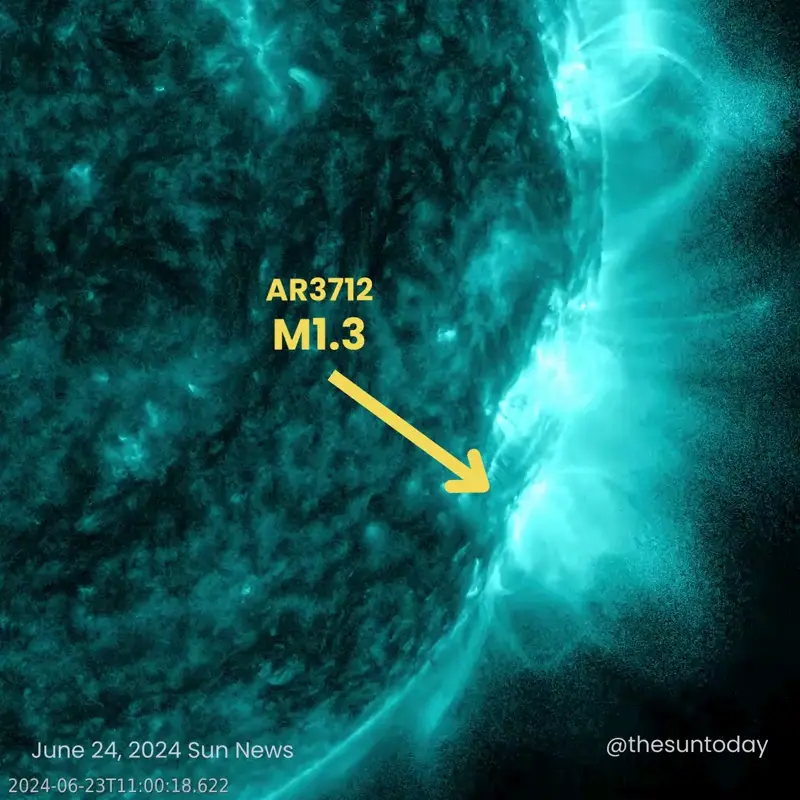
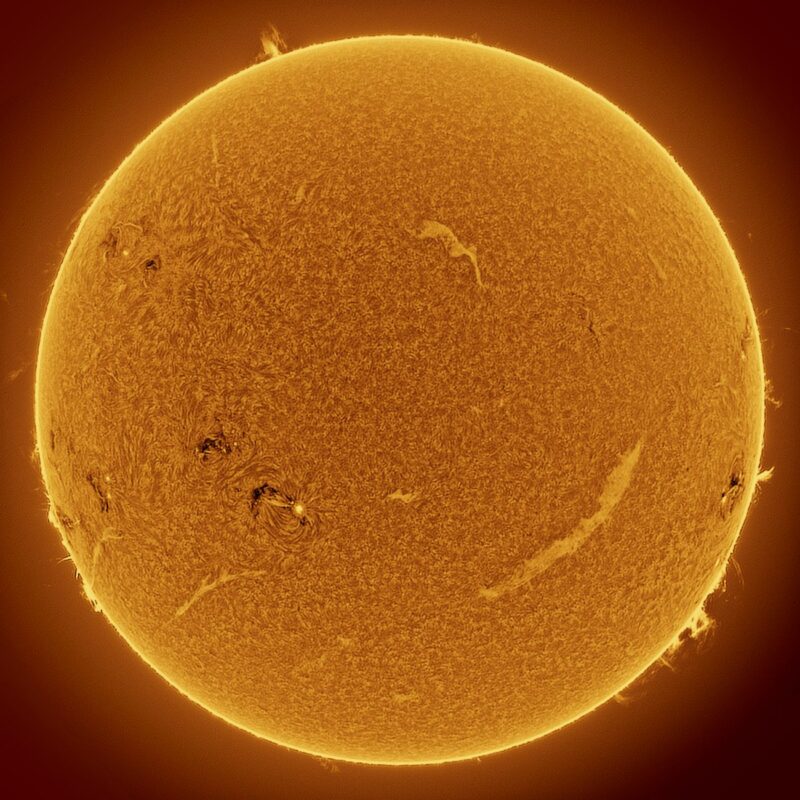
Sun news for June 23, 2024: Is energetic region AR3697 back?
Could energetic sunspot region AR3697 be back? Around 3:18 UTC on June 23, a filament erupted off the sun’s southeastern limb, the side just now rotating into view. Thanks to helioseismology, we know this filament eruption might be associated with a known sunspot region. It could be sunspot region AR3697, formerly AR3664, now perhaps making its 3rd trip across the sun’s visible face (after being carried out of view twice by the sun’s rotation). This sunspot region produced some of the strongest activity of Solar Cycle 25 so far. It was a major driver of the May, 2024, superstorm. Stay tuned to see if this region brings us more excitement in its new incarnation.
Last 24 hours: Isolated M flares, one at the beginning of our observation period (11 UTC yesterday to 11 UTC today) and one near the end, kept sun activity levels at moderate. We saw 19 flares in all over the past day. We also saw an eruption off the sun’s northwest this morning, at 6:18 UTC, as an expansion of a coronal loop. The first M flare (in the east from AR3720) was an M1.0 flare at 11:00 UTC on June 22. It caused an R1 (minor) radio blackout over Africa. The second M of the day, the largest of the period, was an M2.4 flare blasted out by active region AR3716 at 6:16 UTC on June 23. It caused an R1 (minor) radio blackout over Asia. AR3712 and AR3720 were the lead flare producers during the observation period. Sunspot region AR3713 kept its delta magnetic complexity, while AR3712 and AR3716 now show a beta-gamma configuration. These three flares have flare potential. As they get closer to the west limb (edge), any solar energetic particles resulting from those flares might travel a special avenue toward Earth, known as the Parker Spiral. The sun has seven active regions on the Earth-facing disk.
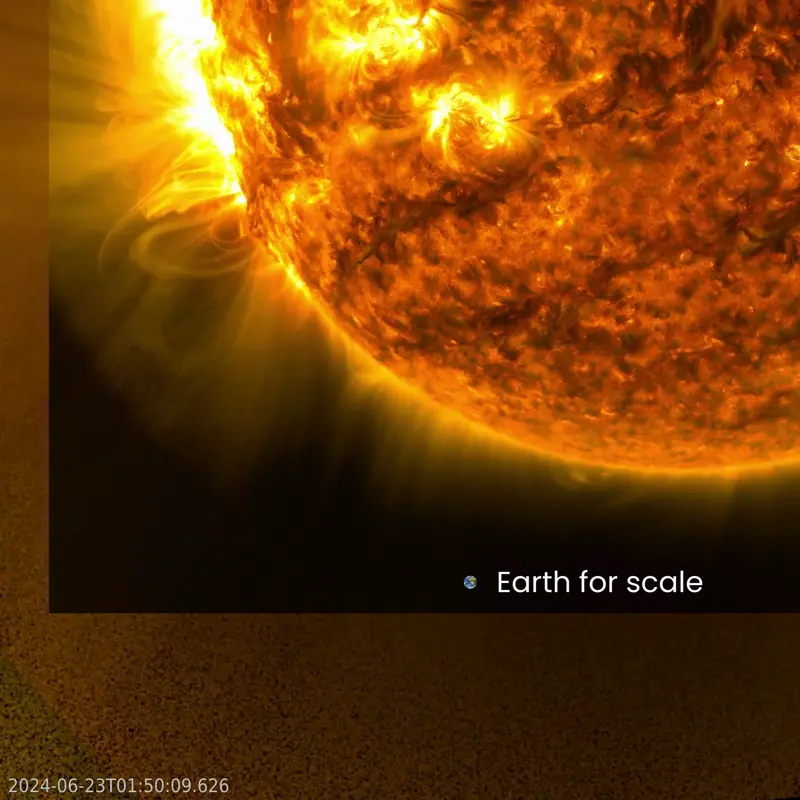
The sun in recent days



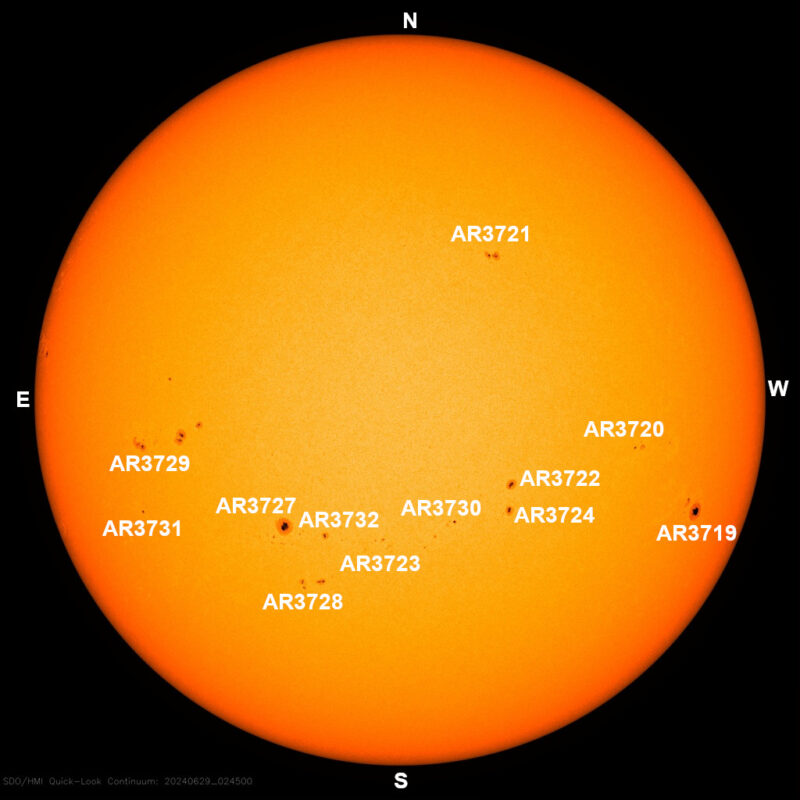

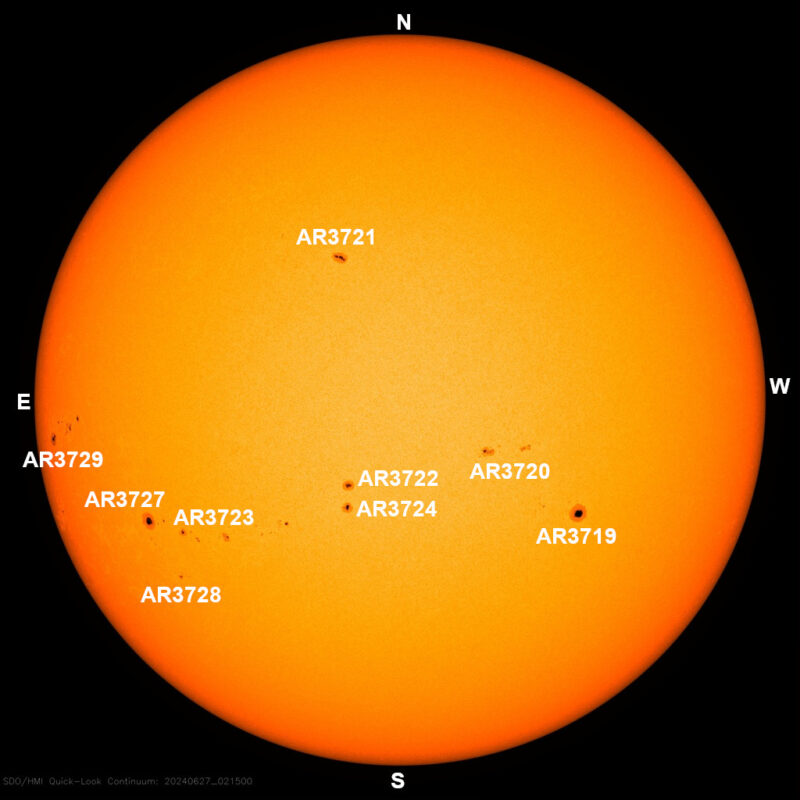
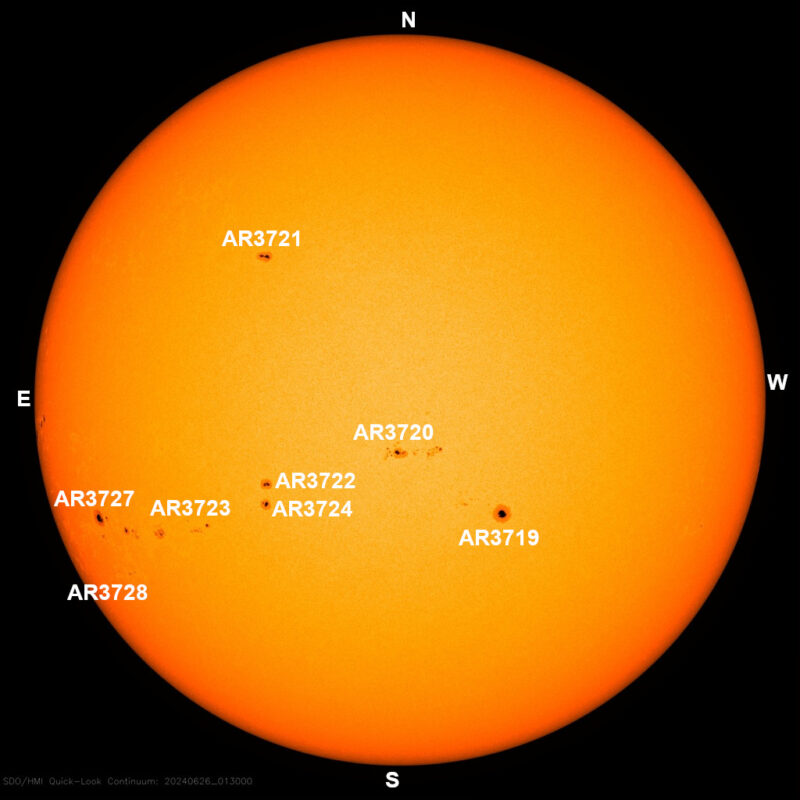
Sun images from our community
Are you a fan of sun images? We invite you all to send us your beautiful recent photos of sunspots and auroras. We love receiving them and sharing them! And to those of you who’ve already posted a photo to our community page, thank you.
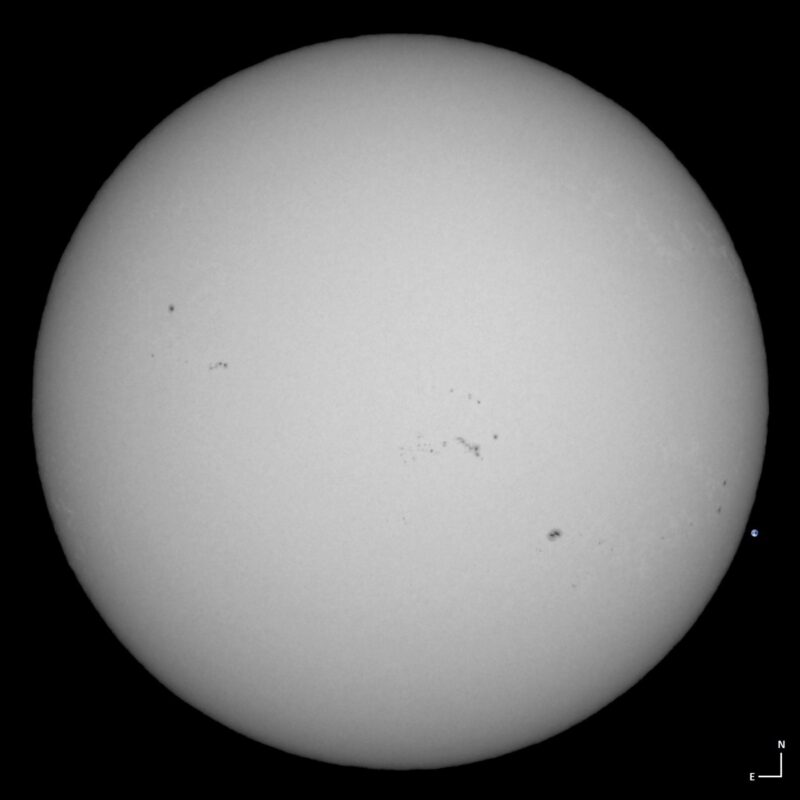
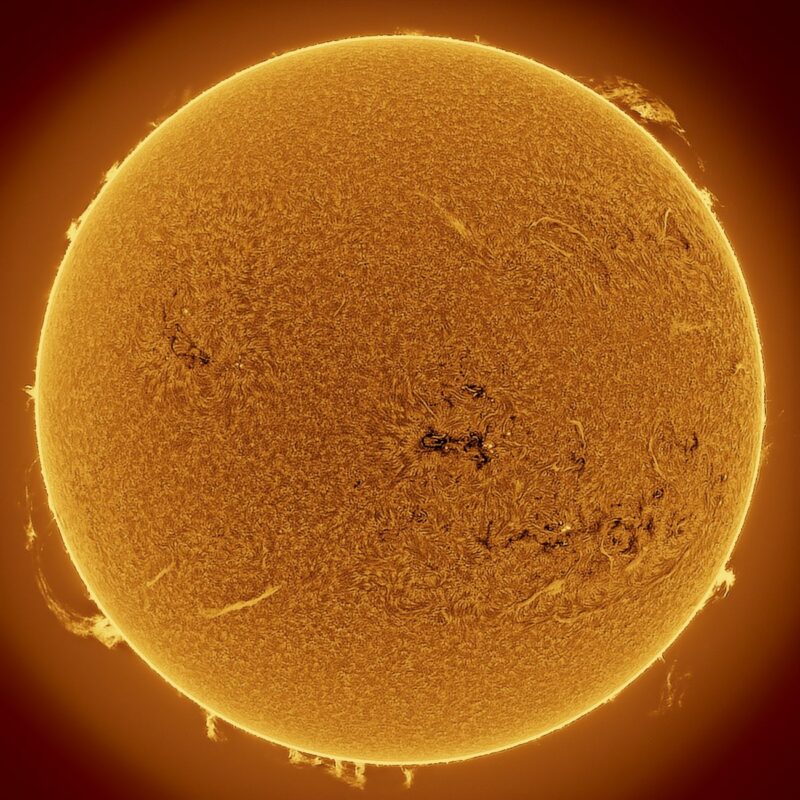
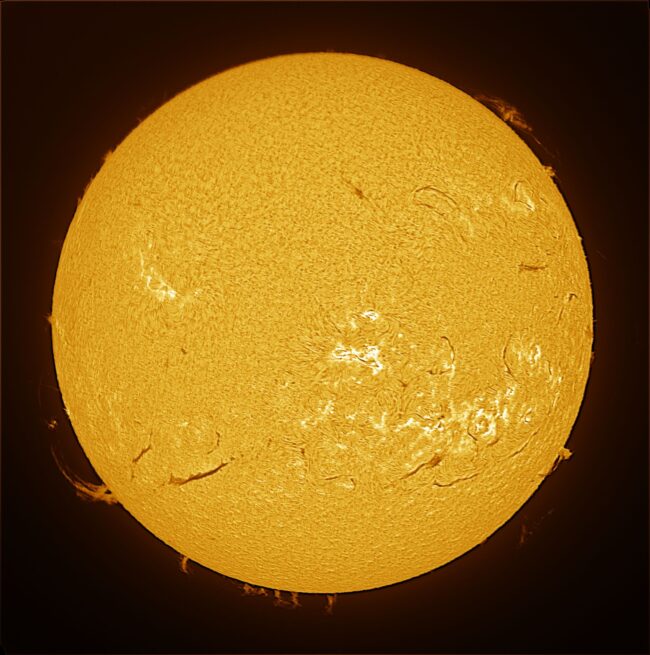
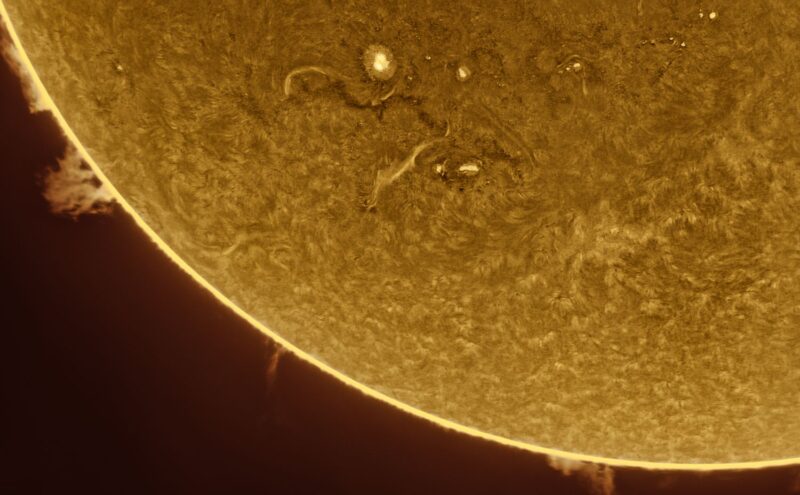

Bottom line: Sun news for July 3, 2024. Moderate sun activity continues, but flaring activity has risen over the past day. Is this the end of the current lull?











